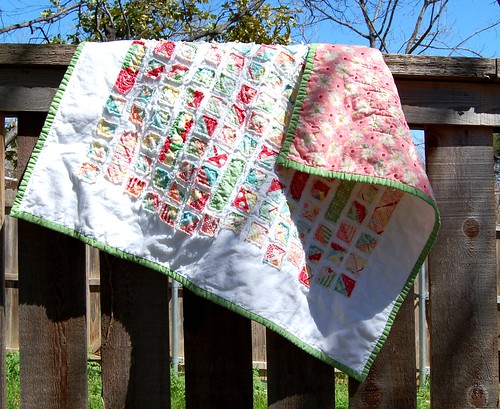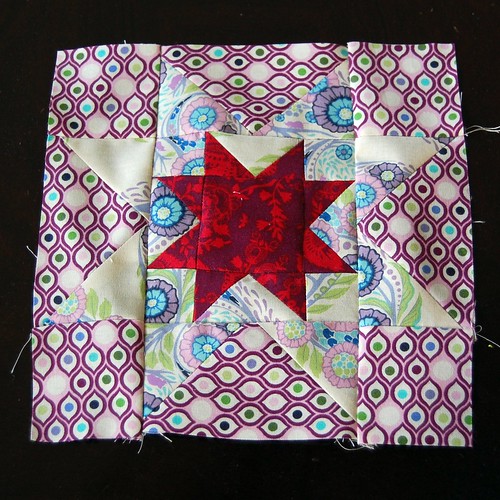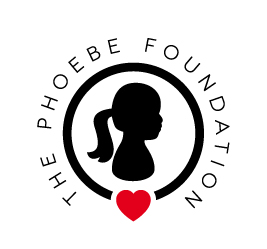What is Vintage Clothing Styles Called
In a world defined by constant change, certain trends have stood the test of time, capturing hearts and imaginations across generations. These captivating looks often evoke nostalgia and charm, inviting individuals to explore their rich histories and cultural significance. Each era has birthed its own signature aesthetics, replete with intricate details and distinctive flair that resonate even today.
Within this fascinating realm, one may encounter a tapestry of influences that highlight creativity and expression. From the playful silhouettes of bygone days to the evocative patterns and colors, each trend tells a story, reflecting societal shifts and artistic movements. These memorable fashions, with their unique characteristics, serve as a bridge connecting past and present.
As enthusiasts of individuality seek to adorn themselves in garments that carry a sense of history, a wealth of inspiration awaits. By delving into these intriguing looks, one can appreciate the artistry behind each piece, as well as the narratives they convey. Embracing such attire allows for a deeper connection to personal style, while celebrating the beauty of times gone by.
Understanding Vintage Fashion Trends
Fashion phenomena from past eras often captivate enthusiasts today, prompting a revival of classic aesthetics. Such trends not only reflect historical contexts but also societal shifts, embodying the essence of their time.
Key Attributes of Classic Fashions
Various characteristics define these noteworthy trends:
- Quality materials that withstand time
- Distinctive silhouettes resonating with specific decades
- Iconic patterns and colors that evoke nostalgia
Influential Eras and Their Impact
Several significant periods have shaped current preferences:
- Roaring Twenties: Flapper dresses and Art Deco influences
- 1950s: A focus on elegance with fitted bodices and voluminous skirts
- 1970s: Emphasis on bohemian styles and vibrant prints
Understanding these timeless trends provides insight into enduring aesthetics that continue to inspire modern apparel choices.
Iconic Styles from the Roaring Twenties
The 1920s marked an era of transformation, where creativity and innovation flourished, and fashion played a significant role in expressing newfound freedoms. This vibrant period saw drastic shifts in societal norms, reflected in garments that embraced boldness and elegance. From lavish soirées to lively jazz clubs, ensembles of this time captured the spirit of liberation and exuberance.
Flapper Fashion
Flapperbobbed hair, cloche hats, and accessories like long pearl necklaces. This was a clear statement of independence, allowing women to express their identities in ways previously unimagined.
Men’s Suits of Elegance
On the men’s side, tailored suits with wide lapels and high-waisted trousers exemplified sophistication. The use of bold patterns and colors stood in stark contrast to previous, more conservative styles. Accessories such as bow ties and derby hats completed the ensemble, encapsulating the dapper gentleman of the decade.
Timeless Elegance of the 1950s
The 1950s represented a remarkable era characterized by a distinct charm and sophistication that continues to inspire fashion enthusiasts today. This period was defined by its graceful silhouettes, luxurious fabrics, and a sense of refinement that mirrored the cultural shifts of the time. As society evolved, so did the aesthetic, blending traditional elements with innovative designs, resulting in unforgettable ensembles that exude class and poise.
Signature Silhouettes
One of the hallmarks of this era was the iconic hourglass shape, celebrated in numerous ensembles. Full skirts paired with fitted bodices dominated women’s fashion, creating a striking contrast that emphasized femininity. A-line dresses and tailored suits for men reflected an elegance that was both polished and approachable, making every occasion a reason to dress with flair.
Luxurious Fabrics and Bold Patterns
Rich textiles such as silk, taffeta, and cotton were commonly utilized, providing depth and texture to every piece. Patterns such as gingham, polka dots, and florals added a playful yet sophisticated touch, showcasing creativity and individuality. As colors varied from soft pastels to vibrant hues, each garment told a unique story, contributing to a rich tapestry of expressive fashion.
Exploring the Psychedelic Sixties Look
The vibrant aesthetic of the sixties marked a significant cultural shift, embracing freedom and experimentation. This period showcased a kaleidoscope of colors, patterns, and innovative designs that reflected the spirit of the age. It was a celebration of individuality, breaking away from conventional norms to create eye-catching ensembles.
- Bold, swirling patterns
- Bright, contrasting colors
- Sky-high platform shoes
- Flowing silhouettes and mini skirts
Fashion in this era was influenced by music, art, and the counterculture movement. Iconic figures emerged, inspiring countless admirers through their daring choices. Styles were not merely garments but statements of ideals and beliefs.
- Popular accessories included:
- Large, round sunglasses
- Headbands and flower crowns
- Bold jewelry with geometric shapes
- Fabrics often featured:
- Psychadelic prints
- Lightweight materials
- Fringe and lace details
The sixties aesthetic continues to influence modern fashion, echoing its ideals of creativity and authenticity. Embracing this era allows one to express their personality in ways that feel both nostalgic and avant-garde.
The Grunge Movement of the Nineties
The grunge phenomenon emerged as a profound cultural force during early 1990s, challenging norms and aesthetic standards of previous eras. Characterized by its raw sound and unconventional appeal, this movement resonated with a disenfranchised youth, providing a voice for those who felt out of place in mainstream society. The style not only represented a musical genre but also served as a backdrop for youth identity and expression, creating a distinct aesthetic palate that has left an indelible mark on fashion.
Influence on Fashion
This countercultural wave presented a distinctive look that embraced comfort and rebellion. Flannel shirts, ripped jeans, and combat boots became synonymous with the grunge ethos. Rather than polished appearances, the focus shifted towards an authentic, often disheveled look that reflected a sense of individuality and non-conformity. Key figures in music not only shaped the sound of the era but also established iconic wardrobes that continue to influence modern trends.
Iconic Elements
| Item | Description |
|---|---|
| Flannel Shirts | Loose-fitting, often oversized, shirts usually worn unbuttoned over band tees. |
| Ripped Denim | Distressed jeans epitomizing a laid-back attitude, frequently with frayed hems. |
| Combat Boots | Sturdy footwear originally designed for military use, perfect for comfort and durability. |
| Graphic T-Shirts | Band tees featuring logos or album art that became statement pieces for fans. |
This era continues to inspire countless designers and artists, reminding us of the power of authenticity and the beauty found in simplicity. Grunge endures as a testament to individuality, unyielding expression, and a celebration of non-traditional beauty.
Artistic Expression in Vintage Outerwear
Throughout history, outerwear has served as a canvas for creativity, allowing designers and wearers alike to showcase their individuality. This category of garments often reflects the artistic movements of its time, each piece embodying a story or a statement that transcends mere functionality.
The charm of these outer garments lies in their diverse aesthetics and innovative designs. They capture not only the trends of their eras but also the spirit of artistic movements. Various forms of artistic expression can be seen in:
- Fabric Choices: Uncommon materials and textures lend depth and character.
- Patterns: Bold prints and intricate embroidery often tell a rich visual narrative.
- Silhouettes: Distinct shapes and structures challenge conventional norms, showcasing creativity.
- Color Palettes: Vibrant hues or muted tones evoke particular feelings and styles.
Moreover, many of these pieces are not just garments; they are reflections of cultural identity and personal ethos, making each one remarkable. Wearers embrace these artistic creations to express their personalities, values, and inspirations.
In summary, outerwear serves as an important medium for artistic exploration, bridging the gap between style and self-expression. Each garment offers an opportunity to connect with the heritage and creativity of the past, making it a cherished part of any wardrobe.
Accessorizing with Retro Chic Pieces
Elevating your outfit often comes down to the attention given to finishing touches. By incorporating select accessories from bygone eras, you can enhance your overall look, adding a touch of nostalgia and charm. The key lies in blending these elements thoughtfully, creating a harmonious fusion of modern and classic aesthetics.
Statement Jewelry
One of the most impactful ways to infuse a sense of history into your attire is through bold jewelry. Pieces such as oversized earrings or intricate brooches can serve as conversation starters while reflecting personal style. Incorporating vintage-inspired necklaces or rings can add an air of elegance, drawing attention without overwhelming the ensemble.
Chic Handbags and Footwear
A carefully chosen handbag or pair of shoes can transform an outfit entirely. Look for structured bags and shoes that feature distinctive designs, such as quirky prints or unique materials. Whether it’s a compact purse with retro flair or stylish heels that echo past fashion trends, these accessories contribute to a cohesive appearance that stands out.
Q&A: What is vintage clothing style called?
What is the difference between vintage and retro clothing?
The difference between vintage and retro clothing lies in the age and origin of the pieces. Vintage clothing refers to authentic items that are at least 20 years old and represent the fashion style of a previous era. Retro clothing, on the other hand, refers to modern clothing that imitates the style of a past era but is not actually old. Retro is used to describe clothing made to look vintage, while vintage items are original pieces from the past.
What makes a piece of clothing vintage?
A piece of clothing is considered vintage if it is at least 20 years old and reflects the style of a specific past era. Vintage items are usually authentic garments that were made between 20 and 100 years ago, before they transition into being considered antiques. These clothing items are often unique and offer a glimpse into fashion history, differing from modern clothing trends.
How does vintage fashion differ from contemporary fashion?
Vintage fashion differs from contemporary fashion in that it represents styles from 20 to 100 years ago, often using designs, fabrics, and techniques that are no longer widely used. Contemporary fashion focuses on current trends and fast fashion, which rapidly changes with each season. Vintage fashion often emphasizes sustainable fashion practices by reusing old styles, whereas fast fashion mass-produces new clothing items.
Why is wearing vintage clothing considered sustainable?
Wearing vintage clothing is considered sustainable because it reduces the demand for fast fashion, which often relies on mass production and has a negative environmental impact. By reusing vintage pieces, consumers help extend the life of clothing and reduce waste. Vintage fashion promotes a more ethical approach to fashion by prioritizing quality and longevity over disposable trends.
What is the appeal of vintage and retro fashion?
The appeal of vintage and retro fashion lies in the unique styles and timeless quality of the pieces. Vintage and retro clothing offer a way to stand out from mainstream fashion by wearing items that are either authentic or inspired by styles from past eras. Many people are drawn to vintage fashion for its craftsmanship, originality, and the chance to express individuality through distinct looks.
Why are vintage pieces becoming popular in mainstream fashion?
Vintage pieces are becoming popular in mainstream fashion because consumers are seeking more unique, high-quality clothing that stands out from fast fashion trends. As interest in sustainable fashion grows, many people are turning to vintage shopping as a way to find one-of-a-kind items that are ethically sourced. Fashion labels are also drawing inspiration from vintage and retro styles, blending them into contemporary designs.
What are the differences between retro style and vintage-inspired style?
Retro style refers to modern clothing that imitates the look of a previous era, while vintage-inspired style can blend both new and old elements to recreate a past aesthetic. Retro clothing is newly made but mimics designs from decades like the 50s or 70s. Vintage-inspired style, however, can include actual vintage pieces or be a mix of both vintage and modern items.
How is clothing considered antique different from vintage?
Clothing is considered antique if it is over 100 years old, whereas vintage refers to items that are between 20 and 100 years old. Antique clothing usually has historical significance and is much rarer than vintage clothing, often requiring special care. Vintage pieces, while still valuable, are more accessible and represent fashion trends from the early to mid-20th century.
What should new vintage shoppers keep in mind when buying vintage clothing?
New vintage shoppers should keep in mind that vintage clothing sizes often differ from modern sizing, so it’s important to measure accurately and try items on if possible. They should also learn to distinguish between authentic vintage pieces and retro reproductions. Shopping vintage requires patience, as finding unique and well-preserved items can take time. Additionally, checking the condition of the garments, such as seams and fabric, is essential to ensure longevity.
Why is there a growing interest in vintage and retro fashion?
There is a growing interest in vintage and retro fashion due to the desire for more sustainable, ethical shopping options, as well as the appeal of wearing unique, timeless styles. Many fashion enthusiasts appreciate the craftsmanship and originality found in vintage pieces, which are often lacking in fast fashion. Additionally, vintage and retro fashion offer a way to express personal style through clothing that stands out from mass-produced items.
What is vintage style and how does it differ from modern fashion?
Vintage style refers to clothing and accessories that were made at least 20 years ago, reflecting fashion trends from past decades. It differs from modern fashion in its focus on unique, timeless pieces rather than mass-produced items. Vintage fashion style often emphasizes craftsmanship, quality materials, and designs that stand out from today’s fast fashion trends. It offers a more sustainable alternative to the disposable nature of modern fashion.
How does vintage inspired style differ from authentic vintage clothing?
Vintage inspired style refers to clothing that imitates the look of past decades but is made with modern techniques and materials. Unlike vintage clothing, which is considered original and made between 20 to 100 years ago, vintage inspired clothing is newly produced but designed to reflect past fashion trends. This allows consumers to enjoy retro looks without the need to source authentic vintage garments.
Why is vintage fashion style becoming popular in mainstream fashion?
Vintage fashion style is becoming popular in mainstream fashion due to the growing demand for sustainable and ethical clothing options. Vintage garments offer a way to break free from fast fashion trends by embracing unique, high-quality pieces that have stood the test of time. Many fashion brands are now incorporating vintage-inspired elements into their collections, making vintage style more accessible to a wider audience.
What are the differences between retro and vintage clothing?
The differences between retro and vintage clothing lie in the time periods and production methods. Vintage clothing usually refers to clothing made between 20 and 100 years ago, representing original pieces from past decades. Retro style clothing, on the other hand, is newly made but designed to imitate fashion from the past. Retro items may resemble vintage looks, but they are produced using modern materials and methods.
How can you find vintage clothing online?
You can find vintage clothing online through specialized platforms like Etsy, eBay, and dedicated vintage clothing stores that offer a selection of vintage garments. Many online stores curate unique vintage items, including vintage dresses, accessories, and shoes. It’s important to check the authenticity of the items, as some may be vintage inspired rather than original vintage pieces.
What makes vintage clothing an ethical clothing option?
Vintage clothing is considered an ethical clothing option because it promotes sustainability by extending the life of garments and reducing the demand for new production. By choosing vintage or second-hand clothing, consumers help minimize the environmental impact of the fast fashion industry, which often relies on overproduction and waste. Vintage garments also tend to be of higher quality, making them last longer than many modern fast fashion pieces.
What are some examples of vintage fashion brands that have stood the test of time?
Some examples of vintage fashion brands that have stood the test of time include Chanel, Levi’s, and Dior. These brands continue to be popular for their vintage styles, and their garments are often sought after in the vintage clothing market. Many of these pieces, such as Levi’s jeans or Dior dresses, have become iconic examples of vintage fashion that are still highly valued today.
How can you distinguish between vintage apparel and modern clothing that imitates vintage?
You can distinguish between vintage apparel and modern clothing that imitates vintage by checking the tags, construction, and materials. Vintage garments often have older labels or unique stitching methods that are not commonly used in modern production. The term vintage refers to clothing made at least 20 years ago, while modern clothing that imitates vintage may use contemporary materials but reflect past fashion styles.
Why is there a growing interest in 90s vintage fashion?
There is a growing interest in 90s vintage fashion due to nostalgia and the cyclical nature of fashion trends. Many people are drawn to the bold, distinctive styles of the 90s, including oversized silhouettes, grunge fashion, and iconic brands like Tommy Hilfiger and Calvin Klein. As these styles have become vintage, they offer a unique blend of comfort and edginess that resonates with both new and seasoned vintage shoppers.
What role do mainstream fashion labels play in reviving vintage inspired style?
Mainstream fashion labels play a significant role in reviving vintage inspired style by incorporating retro elements into their collections. Brands like Gucci and Prada often reference past fashion trends while using modern materials and techniques, creating a fusion of old and new. This has led to a resurgence of interest in vintage fashion styles, making them more accessible to contemporary audiences who want the look without the need to shop for original vintage pieces.



